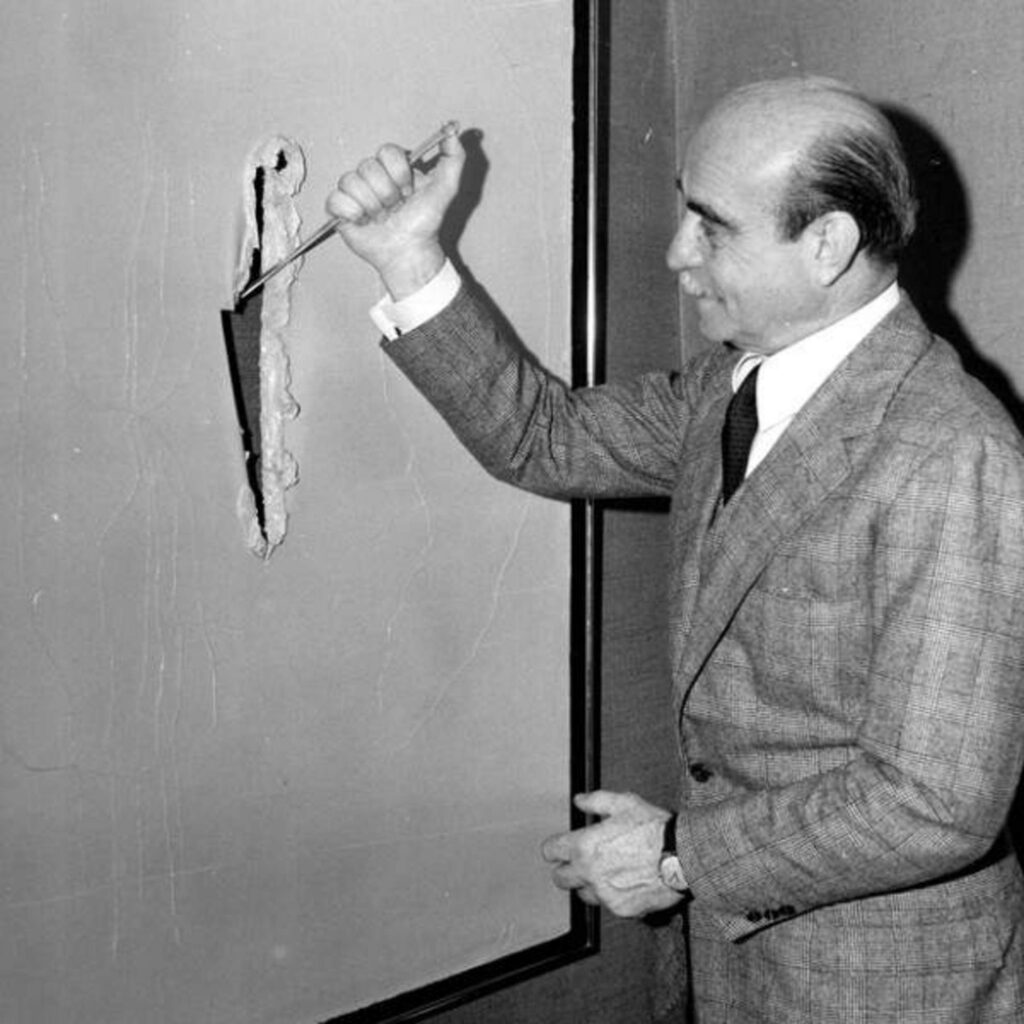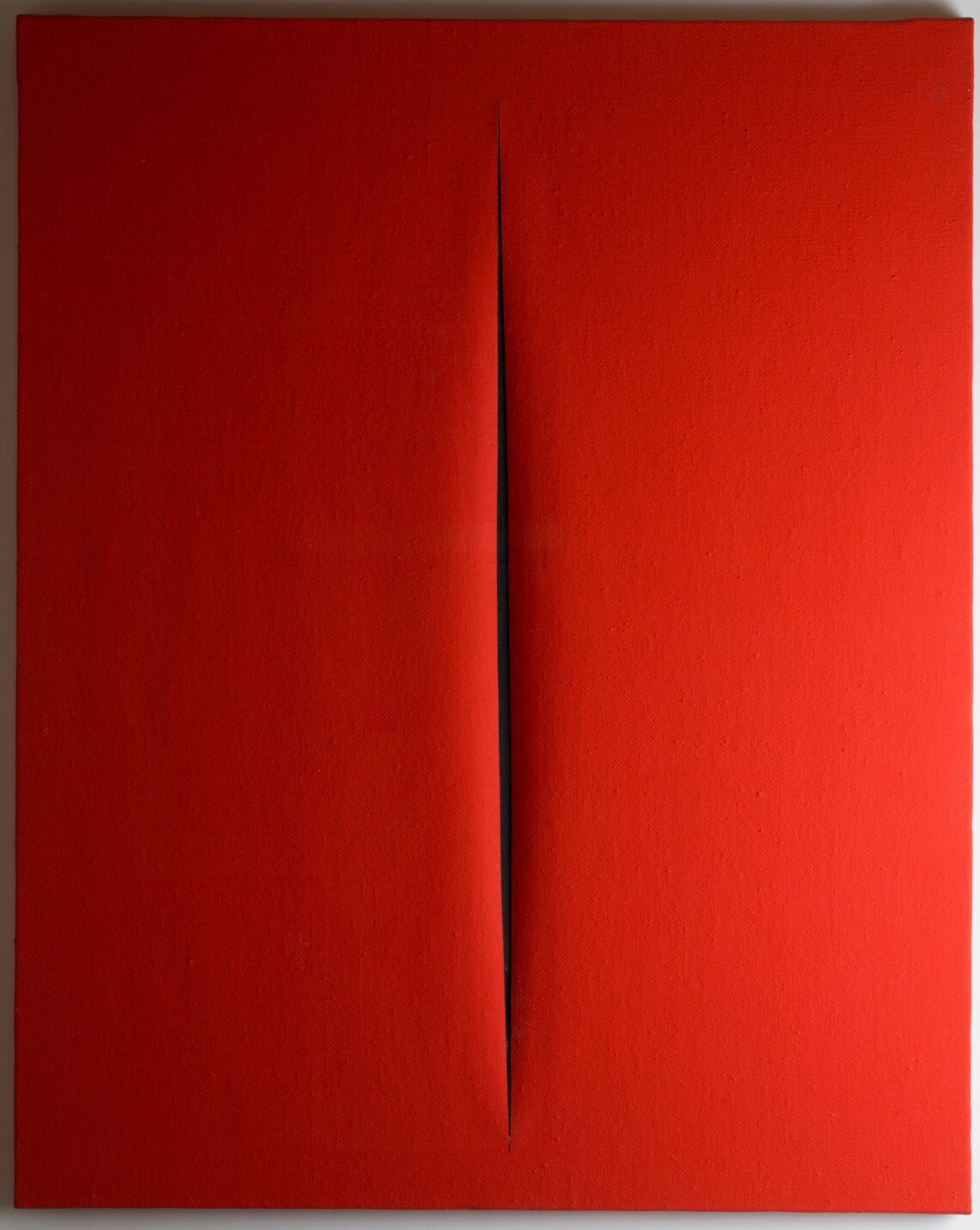Lucio Fontana, an Italian-Argentine artist, brought about the development of spatialism, an idea which made him a historical figure in the world of art. His most famous works, including the “Concetto spaziale, Attese,” show his new vision of art. The focus of this article is on the life and career of Lucio Fontana, and the intriguing nature of the “Concetto spaziale, Attese”.
Who was Lucio Fontana?

Lucio Fontana (1899-1968) was an eminent artist of Argentinean-Italian origin who created Spatialism, a new movement of artistic expression that involved space as an important artistic element. Born in Rosario, Argentina, Fontana relocated to Italy in his youth, where he enrolled at the Academy of Fine Arts in Milan to study sculpture and painting. His earliest works of his clearly suggest his predilection for the interrelation of light, space, and form which would ultimately be the main focus of his later artistic period.
FUN FACT: Lucio Fontana was a groundbreaking artist, he was also known for his charismatic and flamboyant personality.
His Career
Fontana’s professional career extended over many decades and covered a wide range of artistic activities, such as painting, modeling, and ceramics. Nevertheless, he has become recognized above all for his innovative concept of canvas as a three-dimensional space, which he discovered and explored through his famous “Spatial Concepts” series of paintings. These pieces, with their striking holes and slashes, deviated from tradition and encouraged the audience to explore the inner depths of space within the artwork.
Fontana’s artistic path was paved with unending search for novelty and experimentation. In the 1940s, he established the Spatialist Manifesto, wherein he laid down his idea of the new art form that would go beyond the limits and borders of traditional art forms. All the time, Fontana was pushing the limits of artistic forms, looking for new ways of implementing the space and time in his masterpieces.
What is Happening in Concetto spaziale, Attese?

| Artist | Lucio Fontana |
| Date Created | Late 1950s -early 1960s |
| Medium | Canvas with cuts |
| Genre | Spatialism |
| Period | Post-War |
| Dimensions | Varies |
| Series / Versions | Multiple iterations |
| Where is it housed? | Various collections worldwide |
“Concetto spaziale, Attese,” is a powerful and fascinating group of fine arts, which is a product of a genius idea conceived by Lucio Fontana in the late 1950 and early 1960. Each one of these series’ elements uses a canvas, which is black on the whole and carefully diluted by precise straight cuts or cracks. This cut is just an example of the direct Samuel statements, which are the basis of Fontana’s philosophy regarding art.
The purpose of these incisions was not simply to ruin the fabric, but in fact to create something that has never existed before. In this way, by physically breaking through the canvas Fontana wanted to move beyond the limited two-dimensional plane, provoking the viewer to ponder the endlessness of the universe beyond. The slashes, carefully placed, create an image of motion where the canvas is in a state of flutter, always changing and transforming.
In his space exploration, Fontana accepted the notion of the void as an infinite source of possibility. Every cut in “Concetto spaziale, Attese” becomes a door leading to the unseen space in which reality blends with imagination. Such play of light and shadow, which occurs through the openings in the canvas, induces the feeling of depth and three-dimensionality, and bleeds the distinction between tangible and unreal.
Interesting Facts
Fontana’s incisions into the canvas were not random but meticulously planned, reflecting his deep contemplation on the relationship between space and form.
“Concetto spaziale, Attese” challenged traditional notions of art by embracing the void and inviting viewers to engage with the unknown.
Despite initial criticism, Fontana’s Spatialist movement gained recognition, influencing subsequent generations of artists and paving the way for conceptual art.
Frequently Asked Questions
How did Lucio Fontana cut his canvas?
Fontana would use a Stanley knife to make cuts in his canvases. He worked on the rips and used gauze to hold them in place when the paint had dry. He used both his hands and brushes in this process
What inspired Lucio Fontana?
The idea of space and space travel fascinated the artist. Shortly after the globe saw the first images of Earth taken from space, he established the Spatialism art movement in 1947.
Conclusion
“Concetto spaziale, Attese”, represents excellent work of Lucio Fontana and his constant imperative to go beyond the limits of creativity. By breaking the boundaries of space and form, Fontana has demonstrated the possibilities of artistic creation that remained outside the traditional art limits, leaving a legacy that is admired and gazed upon to this day. When we look at the sliced canvases of “Concetto spaziale, Attese” our minds are taken to the secret passageways of the universe and the infinite roads of the art.













